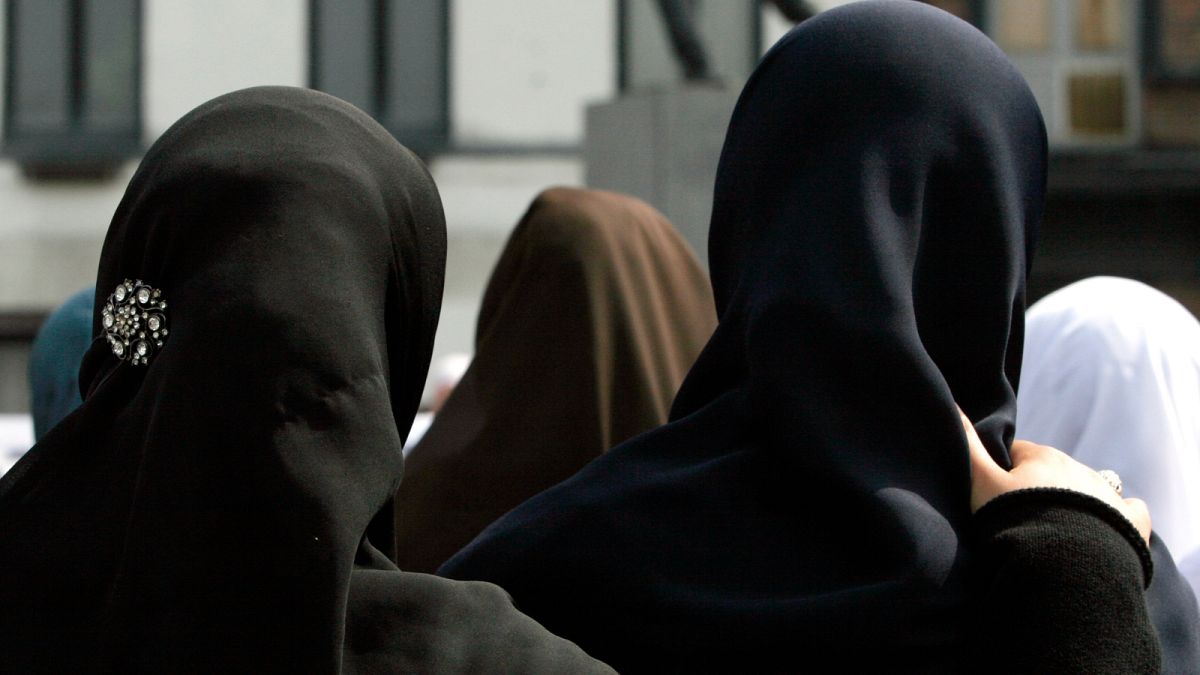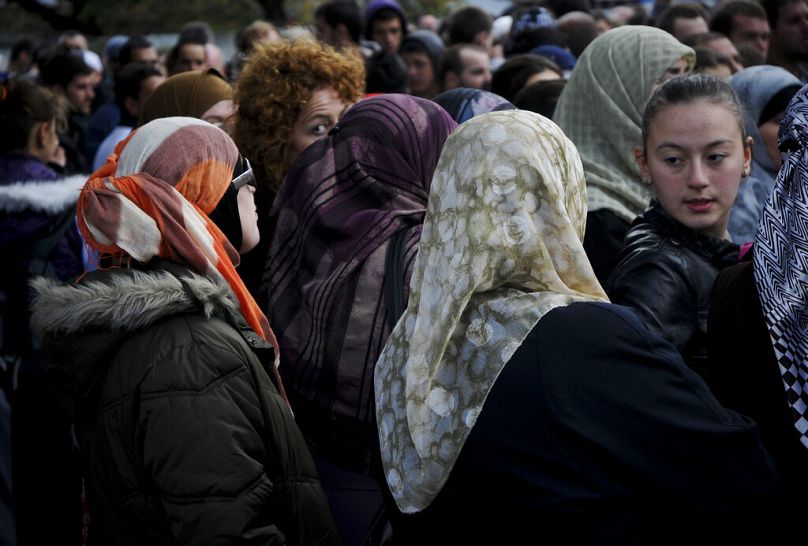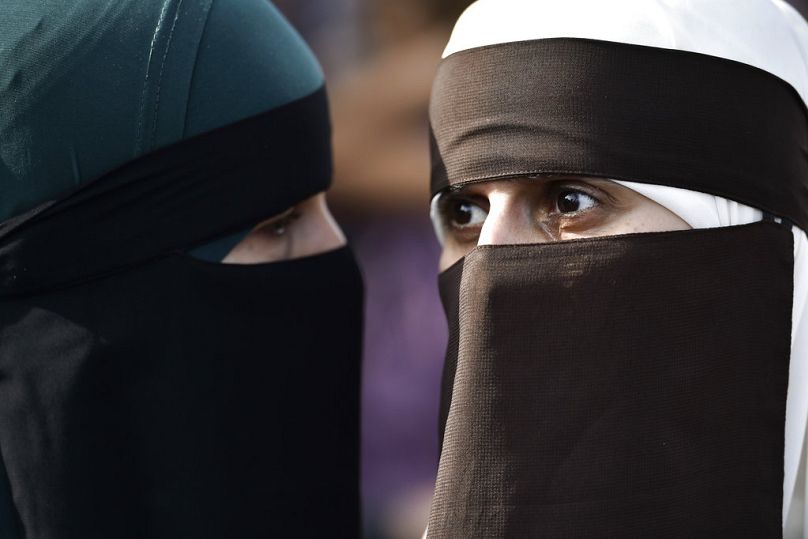As France moved this week to ban students wearing traditional, modest, abaya dresses in class, we take a look at the situation in other European countries.
The French government announced this week that a traditional clothing item, the abaya - a loose dress which some Muslim students wear on top of their clothes - will be banned in schools, in the name of secularism.
Education Minister Gabriel Attal made the announcement almost twenty years after another law was introduced, which restricts religious clothing and symbols in French schools.
So what is the situation like across Europe? Are students in other countries restricted in what they can wear in the classroom if it's a traditional or religious garment, such as Sikh headdresses, or Muslim headscarves?
We took a closer look:
England
In England, the uniform policy is determined by each individual school. However, their rules must conform to the Human Rights Act and Equality Act, which protect characteristics associated with religion or belief, race, gender or ability.
For instance, it could be considered discriminatory to prevent a Muslim girl from covering her hair with a hijab or banning a hairstyle associated with a specific ethnic or national group.
Proven discrimination could be considered unlawful.
But these rights can be balanced against other school policies. In short, there are no blanket bans and pupils can challenge restrictions on a case-by-case basis.
In 2021, the headteacher of Pimlico Academy in London was forced to resign after his uniform policy sparked mass strikes by students, who widely saw it as racist. Colourful hijabs and Afro hairstyles were reportedly prohibited.
According to advice from the UK Home Office: "Where a school has good reason for restricting an individual's freedoms, for example, the promotion of cohesion and good order in the school, or genuine health and safety or security considerations, the restriction of an individual’s rights to manifest their religion or belief may be justified."
"Schools should be sensitive to the needs of different cultures, races and religions and act reasonably in accommodating these needs, without compromising important school policies, such as school safety or discipline," it adds.
Northern Ireland has the same policies as England.
Germany
The issue of wearing religious head coverings in Germany continues to spark debate and court cases too.
Generally, since 2015 individual German states have been allowed to decide for themselves whether to permit or ban religious symbols or clothing in their schools.
That means depending on which part of Germany you attend school as a student, or work in a school as a teacher, there will be different rules in force.
Some states have chosen to prohibit the hijab, while others have allowed it with certain restrictions, such as requiring that the face or hair be visible.
At least eight states have introduced so-called "neutrality laws" which meant that religious symbols are banned in public classrooms, although in many cases the ban does not extend to Christian symbols.
In January 2020, a Hamburg court ruled that a 16-year-old female student could wear a niqab in the classroom. This garment covers the entire head and face, leaving just the eyes exposed.
Authorities said that wearing the niqab would mean the student was unable to fully communicate with her teachers or other students, but the court found that not to be the case at all.
Freedom of religion is enshrined in Germany's constitution, but individual states and schools can also set their own rules on what is considered 'proper attire' in the classroom.
Italy
Despite the election of a far-right populist government last autumn in Italy, there is little or no ongoing public or political discussion in Italy about wearing religious clothing in classrooms.
After all, there would be a disconnect in talking about banning hijabs or headscarves that students might wear for religious reasons when nuns who teach in many Italian schools also frequently cover their heads on religious grounds.
In 2011, the European Court of Human Rights ruled that there was no problem with the Italian state displaying large crucifixes on school classroom walls, saying it "did not denote a process of indoctrination."
The case was brought before the court after complaints that having a crucifix on the wall of state-run schools was not inclusive of other faiths. The court found that not to be the case.
Kosovo
In Kosovo, a Muslim-majority country, there has been a ban on students wearing headscarves since 2010.
Islamic groups in the Balkan country have regularly requested the repeal of the laws that ban head coverings, calling it discriminatory, most recently in August last year with a direct appeal to Prime Minister Albin Kurti.
Scotland
Primary and secondary school pupils in Scotland usually wear a specific uniform to attend classes, and the requirements on the items that make up the uniform, including which colours and style of trousers, skirts or shirts are permitted, are set by the individual schools.
However, the Scottish Government tells Euronews they do "not impose restrictions on religious clothing in schools."
Spain
In Spain, there are no regulations on the wearing of the Islamic headscarf in the classroom.
Each region can decide on educational matters. If there's no regional mandate, it's up to the schools themselves to set their own dress codes within the framework of their autonomy. That's why it's banned in some schools and allowed in others.
The Ministry of Education would be in charge of the legislation, and sources in the ministry assured the Spanish newspaper El Confidencial that there were no problems of coexistence to even think of legislating on the issue.
However, crucifixes, which used to be seen in Spanish classrooms, have been banned. In 2010, the law on freedom of religion developed the "secularism of Spain".
It states: "Religious symbols may not be displayed in public places, with the exception of those with historical-artistic, architectural and cultural value protected by law".
Sweden
At the end of 2022, Sweden's Supreme Administrative court ruled there were no legal avenues for local authorities to ban headscarves or similar garments in schools.
The court found that existing laws on freedom of expression protect students' rights to express their religious affiliation.
The case came about when two municipalities wanted to ban headscarves for children in pre-school and primary schools, up to the sixth grade. In one case, the ban would have also extended to teachers.
In the past, Sweden's parliament has also rejected proposals to ban headscarves, with the constitutional committee finding no grounds for new legislation that would ban veils in society, or for children in certain activities.
"Limiting the right to wear a headscarf has effects on individuals and is therefore a limitation of freedom of expression," Sweden's minister of justice said at the time in a press release.


